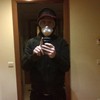At the beginning of last week, parliamentary elections took place in Syria. While you might think that, on the face of it, this is A Good Thing for the country, I guess people are gonna doubt the vote's democratic credentials when the ruling party's election campaign has consisted of blowing people up.In the parts of the country where President Assad's crackdown is taking the heaviest toll, the election – ostensibly held to determine the 250 members of Syria's parliament – was largely boycotted. The internationally recognised opposition group, the Syrian National Council, were not allowed to stand either, so Assad found himself running against "opposition" groups created and funded by his own regime.Some inventive Syrians expressed their thoughts on the election by filming themselves posting "votes" in fake ballots whilst reciting the names of the many thousands of civilians killed in the violence:
Advertisement
As the Annan peace plan continues to be ignored and the bloodshed intensifies, many are now suggesting that the violence in Syria can be categorised as a civil war. One of them is Jakob Kellenberger, head of the International Committee of the Red Cross, who argued that the fighting in Homs and Idlib has been intense enough for long enough now that it matches the criteria defining a non-international armed conflict (another key constituent of that is the level of organisation shown by the Free Syrian Army).
If the fighting is officially recognised as a civil war, both parties will be bound to the terms of the Geneva Convention. If people are captured by the opposite side, they'll have to be treated humanely (both sides have probably been guilty of the opposite thus far). It would also legitimise any FSA attack on a bona fide military target, though those targets may suddenly be harder to defeat because it would also allow Assad to use his full military arsenal, including fixed-wing fighter jets. Really, the most important effect it could have on the conflict is to embolden the international community to step in and start what is sure to be a long and complicated healing process.Not that either side seems particularly keen on peace right now. Last week, the FSA's leader, Riad al Asaad, promised to step up the guerrilla campaign against the regime for its failure to adhere to Annan's peace project.
Advertisement
Sure enough, the attacks on checkpoints increased, government convoys were hit by IEDs and Syrian army members were assassinated. One incident on Wednesday did the FSA no favours, however, as an RPG hit a bus carrying pro-regime militiamen near a convoy of UN monitors in Daraa. Seven Syrian soldiers were wounded, though some opposition activists questioned the assumption that the FSA were responsible, wondering why they'd risk an attack so near to the UN monitors.
The next day, the capital Damascus was hit by two massive explosions. Syrian state TV reported that the FSA had killed 55 people and wounded over 300. There have been a number of these bomb blasts across the country of late, and many in the international community suspect them to be "false flag" attacks by the government. Jamal al-Wadi, a member of the Syrian National Council, had this to say about the incident: "By orchestrating this, the regime is trying to send a message to the outside world that it is facing a terrorist threat, not a popular war against repression." On their website, the SNC listed a number of compelling arguments for the regime's involvement in the blasts, asking why the FSA would target civilians, and questioning how such a large amount of explosives got through the numerous security cordons in Damascus. There are also reports indicating that eyewitnesses were shot by snipers.
This renewed FSA offensive has not gone unpunished, with the regime crackdown continuing alongside the UN monitor mission. A wave of attacks have been carried out against cities such as Rastan, which felt the force of the regime once more at the weekend. The local FSA managed to take out a number of armoured vehicles and tanks, as you can see in the video above.
Advertisement
The animosity between the two sides hasn't stopped defections. The video above shows a Syrian army soldier joining a protest in idlib under the cover of UN monitors as his former comrades look on. Ballsy.
Stay up-to-date on what's happening in Syria by following these Twitter accounts:@syriahr@syriarevolution@LeShaque@AlexanderPageSY@Arab SpringFFand this Facebook page: http://www.facebook.com/BritishSyrianRevolutionFor regular video updates, subscribe to: http://www.youtube.com/user/UgaritNewsEnglish?feature=g-all-uFollow Henry on Twitter: @Henry_LangstonPreviously: Syrian Slaughter Update - Week Thirteen
